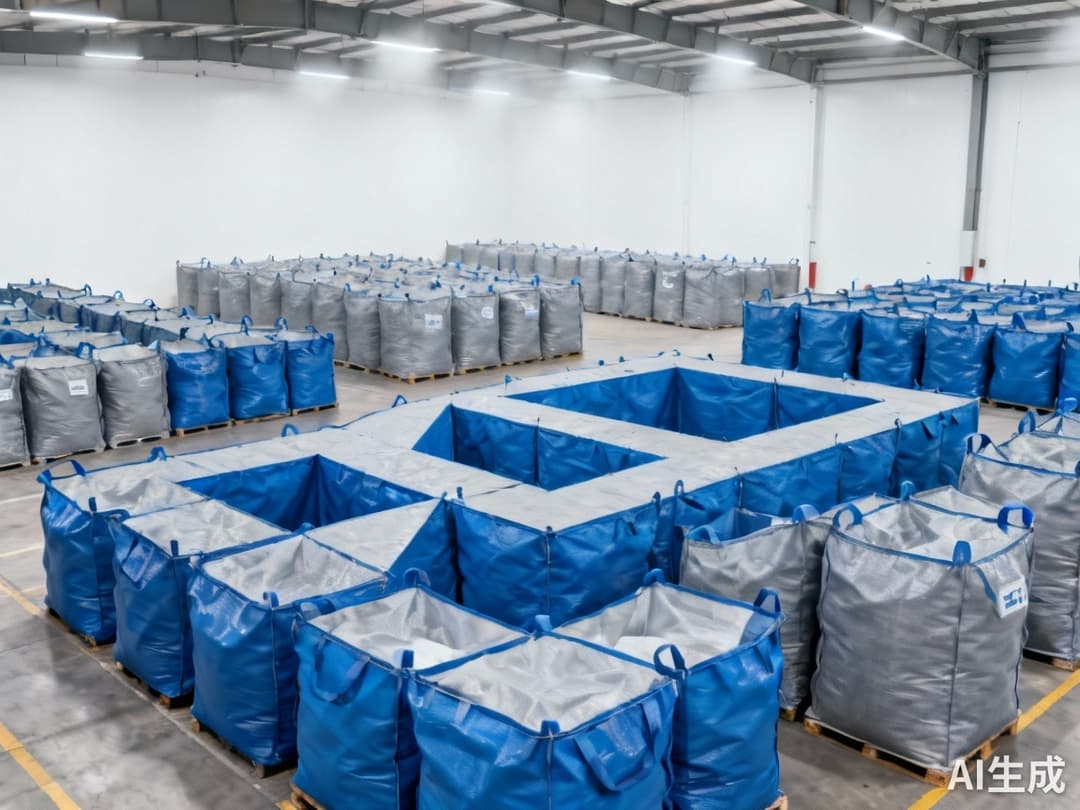Tonnage Bags Cut Packaging Waste 35% & Boost Transport Efficiency: Case Study Insights #53

From Linear to Circular: How Tonnage Bags Transform Bulk Material Packaging Economics
The global packaging industry stands at a critical juncture. With plastic production reaching 460 million tons in 2019—representing a 230-fold increase over the past 70 years—and approximately 350 million tons of plastic waste generated annually, businesses face mounting pressure to adopt sustainable packaging solutions. The 2024 Chinese packaging paper market volatility, with over 4 million tons of new capacity coming online and export orders surging in Southern and Eastern China, further complicates procurement decisions and cost management.
The Packaging Waste Challenge in Bulk Materials
Traditional bulk material packaging operates on a linear model: produce, use, dispose. This approach generates significant waste and inefficiencies throughout the supply chain. The Master Kong case study reveals a critical insight: piecemeal solutions deliver limited results. True transformation requires systematic rethinking of packaging logistics from raw material transportation to end-user delivery.
Global plastic pollution has reached crisis levels, with only 0.5% of plastic waste ultimately entering oceans—highlighting the urgent need for comprehensive waste reduction strategies throughout industrial supply chains.
Master Kong's Systematic Packaging Transformation
Master Kong's packaging overhaul demonstrates how coordinated changes can achieve substantial environmental and operational benefits. The company implemented three interconnected strategies:
- Tank truck transportation replacement: Eliminated disposable packaging for bulk liquid ingredients
- Cardboard box recycling system: Implemented closed-loop recycling for secondary packaging
- Tonnage bag adoption: Shifted from small-format packaging to reusable bulk containers for dry ingredients
This integrated approach delivered measurable outcomes: 35% reduction in packaging waste and significant transportation efficiency improvements, though specific ROI metrics weren't quantified in the available data.
Key Implementation Insights
The Master Kong experience underscores that successful packaging transformation requires addressing multiple aspects simultaneously. Simply replacing one type of packaging without considering the entire logistics chain leads to suboptimal results. The company learned that transportation mode changes, recycling infrastructure, and primary packaging redesign must be coordinated to achieve maximum efficiency gains.
Practical Implementation Framework for Tonnage Bag Adoption
Phase 1: Comprehensive Packaging Audit
Begin with a thorough assessment of current packaging waste streams and transportation inefficiencies:
- Material flow analysis: Map all packaging inputs and waste outputs across your supply chain
- Transportation efficiency benchmarking: Calculate current load factors, empty return rates, and handling times
- Cost allocation review: Identify hidden costs associated with packaging disposal, storage, and handling
This baseline assessment provides the quantitative foundation for measuring improvement and prioritizing intervention points.
Phase 2: Tonnage Bag Selection and System Design
Choosing the right tonnage bag requires matching container specifications to material characteristics:
- Material compatibility matrix: Evaluate chemical resistance, moisture barrier requirements, and UV protection needs
- Handling infrastructure assessment: Ensure compatibility with existing loading equipment and storage facilities
- Transition management plan: Develop phased implementation schedule to minimize operational disruption
Consider the 2024 packaging market dynamics when planning your transition. With new paper capacity coming online and export markets growing, timing your packaging procurement strategically can yield additional cost savings.
Phase 3: Performance Measurement Framework
While Master Kong's case didn't quantify ROI, establish these measurable indicators for your implementation:
- Packaging reduction metrics: Track weight and volume of packaging materials eliminated monthly
- Transport efficiency gains: Monitor load factors, transportation costs per ton, and handling time reductions
- Environmental impact assessment: Calculate carbon footprint reduction and waste diversion from landfills
Navigating 2024 Market Volatility
The current packaging market presents both challenges and opportunities for tonnage bag adoption:
- Strategic procurement timing: With packaging paper prices fluctuating, consider forward purchasing during market dips
- Export market alignment: Southern and Eastern China's export growth indicates increased container availability—potentially reducing transportation costs for tonnage bag users
- New capacity utilization: Monitor how the 4 million tons of new packaging capacity affects material costs and availability throughout 2024
Tonnage Bag Specification Decision Framework
Selecting the appropriate tonnage bag requires evaluating multiple factors against your specific operational needs:
- Material composition: Evaluate polypropylene, polyethylene, or composite materials based on chemical compatibility
- Capacity requirements: Match bag size to transportation mode constraints and handling equipment capabilities
- Safety features: Consider lifting configurations, fill/discharge designs, and safety factor ratings
- Reusability potential: Assess cleaning requirements and lifespan expectations for cost-effectiveness
Vendor Selection and Implementation Timeline
A successful tonnage bag program requires careful partner selection and phased implementation:
- Supplier qualification checklist: Verify quality certifications, manufacturing capabilities, and compliance documentation
- Pilot program design: Implement small-scale testing with defined success metrics before full deployment
- Training requirements: Develop comprehensive operator training for safe handling and efficiency optimization
- Performance review schedule: Establish regular evaluation intervals to assess program effectiveness and identify improvement opportunities
Conclusion: Building a Circular Packaging Economy
The Master Kong case study demonstrates that tonnage bags represent more than just packaging replacement—they enable a fundamental shift toward circular economy principles in bulk material handling. By reducing packaging waste by 35% and improving transportation efficiency, companies can achieve both environmental and economic benefits.
As global plastic production continues to grow and packaging markets experience increased volatility, adopting systematic packaging solutions becomes increasingly critical. The framework provided here offers a practical roadmap for implementation, helping businesses avoid common pitfalls while maximizing the benefits of tonnage bag adoption.
Successful transformation requires viewing packaging not as a cost center but as an integral component of supply chain efficiency and environmental responsibility. Those who embrace this holistic approach will be better positioned to navigate market fluctuations, meet sustainability targets, and improve operational performance in an increasingly competitive landscape.
